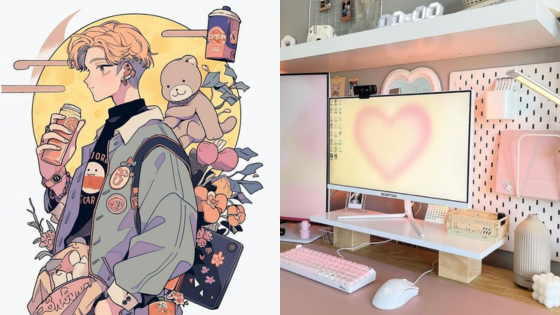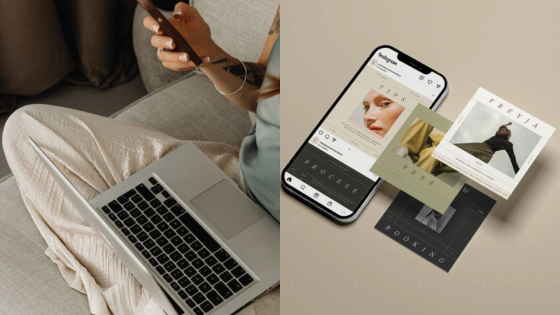Drawing cars can be a challenging yet rewarding endeavor for artists at any skill level. This article presents a compilation of over ten essential tips aimed at enhancing car drawing techniques, which can help improve precision, creativity, and overall effectiveness. Whether one is a beginner or an experienced artist, these insights can provide valuable guidance.
The art of car drawing combines aspects of both technical skill and artistic expression. With the right approach and practice, anyone can elevate their ability to depict vehicles with accuracy and style. Each tip included in this article is designed to encourage exploration and mastery of car sketches.
1) Start with basic shapes


Beginning a car drawing with basic shapes is essential for establishing the overall structure. By using simple forms like rectangles, circles, and triangles, the artist can outline the proportions and positioning of the vehicle. This technique helps in visualizing the car before adding details.
The artist can start with a rectangle for the body and circles for the wheels. This method allows for easy adjustments while sketching. It’s important to focus on how these shapes relate to one another.
Once the basic framework is in place, the artist can refine the shapes into more specific features. For instance, the rectangle can be modified to reflect the car’s contours. This incremental approach fosters confidence in the drawing process.
Using basic shapes also aids in understanding perspective. Artists can experiment with angles and views without the pressure of intricate details. Practicing this step will significantly enhance one’s ability to draw cars more accurately. This foundational method serves as a reliable roadmap for more complex designs later on.
2) Master perspective drawing

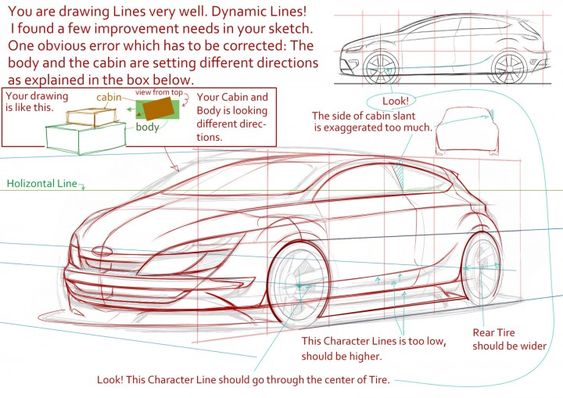
Perspective drawing is crucial for creating realistic car drawings. It involves depicting depth and dimension on a flat surface. Understanding vanishing points and horizon lines can greatly enhance the realism in these drawings.
Begin by familiarizing oneself with one-point and two-point perspective. One-point perspective has a single vanishing point, ideal for scenes where the viewer looks straight down a road. Two-point perspective uses two vanishing points, which is useful for drawing cars at angles.
Practicing basic shapes in perspective lays a strong foundation. Draw simple objects, like boxes, in one and two-point perspectives to grasp how lines converge. This technique can later be applied to car shapes and structures.
Incorporating these principles helps create a sense of space around the car. The relative size of objects and how they decrease in scale contribute to the overall realism.
Mastering perspective allows for more dynamic and engaging compositions. It adds depth, making the car appear more lifelike and integrated within its environment. Consistent practice will lead to improved proficiency in perspective drawing.
3) Use light strokes for sketching


Using light strokes is essential when sketching cars. This technique allows the artist to establish basic shapes and outlines without committing to heavy lines.
Starting with light pressure helps in making adjustments easier. Mistakes can be corrected without the need for erasing dark marks, which can disrupt the paper’s texture.
Light strokes also encourage fluidity in the drawing process. They enable the artist to develop a sense of proportion and perspective before adding details.
As the sketch progresses, heavier lines can be applied to define edges and important features. This gradual buildup enhances the overall composition without overwhelming the initial concept.
Artists should focus on maintaining a relaxed grip on the pencil. A lighter touch fosters a more spontaneous and dynamic sketching experience.
Incorporating this technique can lead to more accurate and appealing car drawings. By mastering light strokes, artists can achieve greater control over the visual outcome of their work.
4) Experiment with different pencils
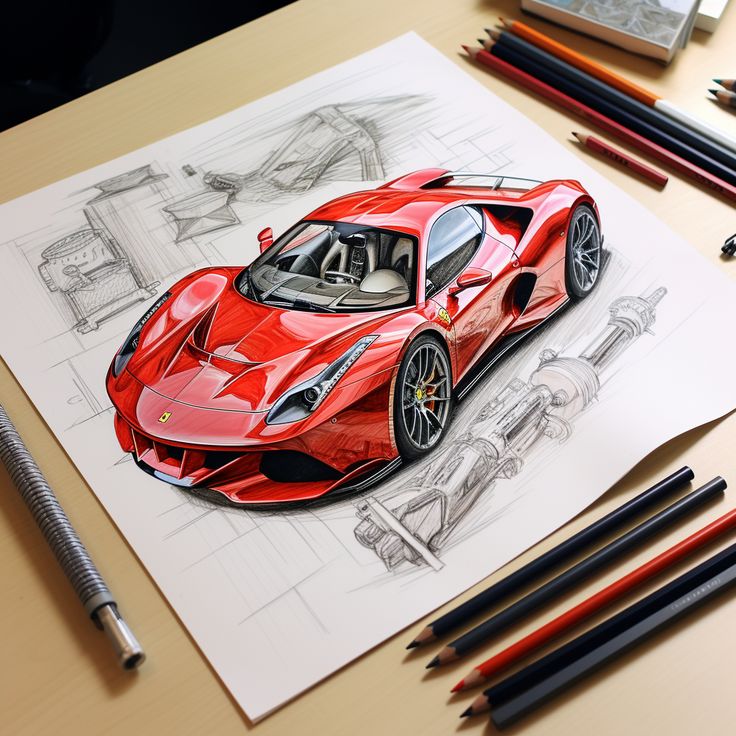
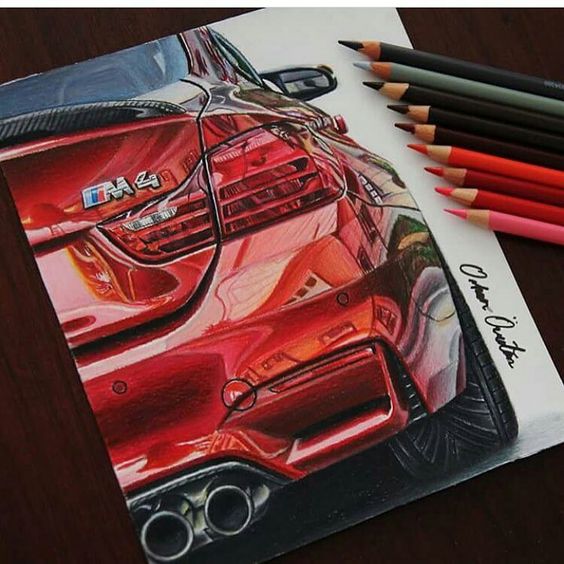
Using various pencils can significantly enhance drawing skills. Different pencil grades produce different intensities and textures.
Soft pencils, like 2B or 4B, lay down darker lines and are ideal for shading. They create rich shadows and depth.
Harder pencils, such as H or 2H, provide lighter lines and are better for detailed work. These pencils help achieve fine details and cleaner outlines.
By alternating between soft and hard pencils, artists can refine their techniques. This practice encourages exploration of shading styles and line variation.
Using colored pencils adds another layer of complexity. They can contribute to creativity and enhance the visual appeal of a car drawing.
Continuously experimenting with pencil types fosters an understanding of how different tools affect the artwork. Each pencil brings unique qualities that can improve an artist’s overall technique.
5) Focus on proportions

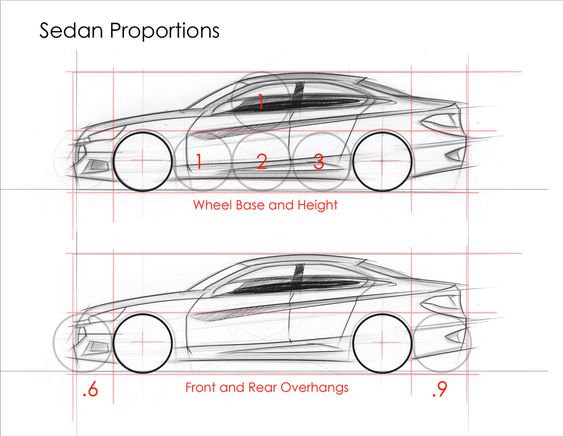
Proportions are critical in car drawing. They determine the relationship between different parts of the vehicle, such as the wheels, body, and windows. Accurate proportions create a believable and visually appealing image.
To maintain good proportions, artists can use reference points. These might include the height of the wheels compared to the body or the overall length of the car. Measuring these ratios helps ensure all elements fit together harmoniously.
Using grids can aid in proportioning. Dividing the reference image into sections allows for easier scaling and accuracy. This technique helps in transitioning from a rough sketch to a refined drawing.
Understanding the vehicle’s design is another essential aspect. Different cars have unique proportions based on their type, such as sports cars versus sedans. Familiarity with various styles can enhance accuracy in representation.
Lastly, practice reinforces the skill of proportioning. Regularly drawing different car models builds an intuitive sense of scale and balance. Continuous observation and analysis improve proportion accuracy in the artist’s work.
6) Study reference photos
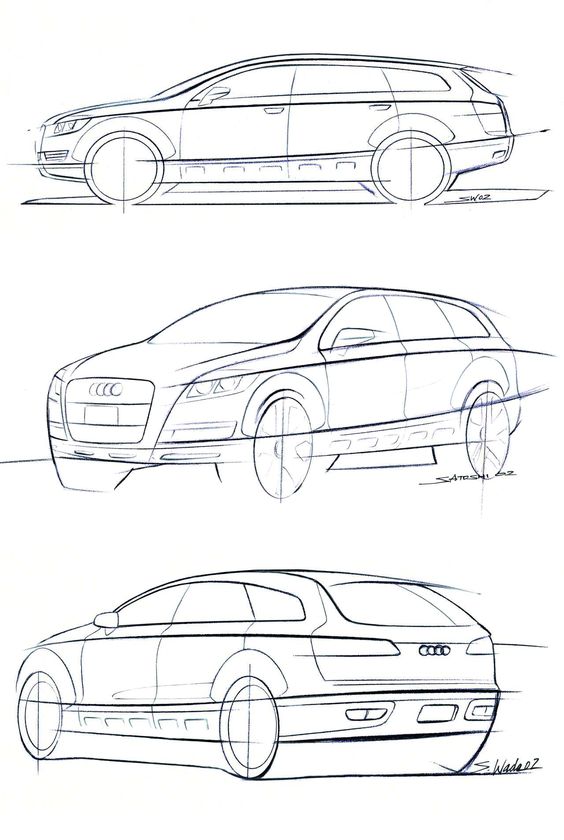

Studying reference photos is essential for improving car drawing skills. It allows the artist to observe the intricate details of different models, angles, and lighting conditions.
Reference photos provide valuable insights into proportions, shapes, and textures. An artist can analyze how light interacts with various surfaces, enhancing the realism in their sketches.
Taking the time to compare multiple photos can reveal unique features and common patterns. This practice helps refine observational skills and fosters a deeper understanding of automotive design.
Using high-quality reference images is crucial. Clear, well-lit photos show the vehicle’s details, enabling accurate representation. Artists should consider both static images and dynamic shots to capture movement.
Incorporating reference photos into the drawing process can significantly boost confidence and accuracy. The artist benefits from a solid foundation of knowledge that translates into more compelling artwork. Consistent practice with references ultimately leads to artistic growth.
7) Practice shading techniques
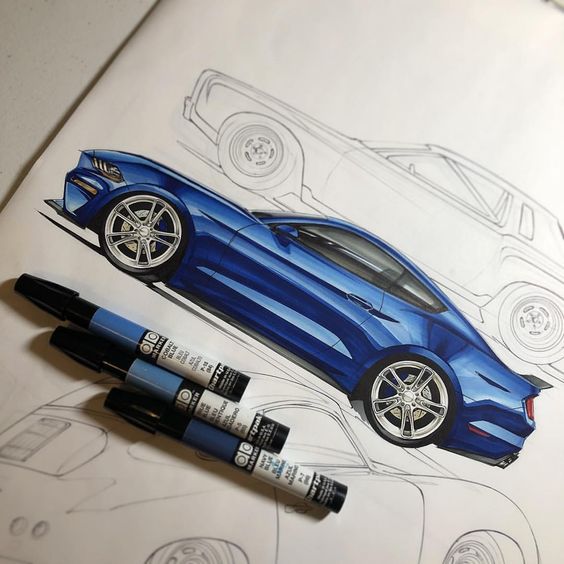

Shading adds depth and dimension to car drawings. It helps to create the illusion of light and shadow, making the vehicle look more realistic.
Artists can start with simple techniques like hatching, where parallel lines are drawn. Varying the spacing can control the darkness of the shaded area.
Cross-hatching involves overlapping lines in different directions. This technique increases texture and creates richer shadows.
Blending is another effective method. Using a blending stump or a soft cloth can smooth out pencil strokes, resulting in soft transitions between light and dark areas.
Understanding light sources is crucial. Knowing where the light hits the car will guide shading choices and enhance the overall look.
Practicing these techniques on paper can improve skills over time. Artists should spend time experimenting with different pencils and pressures to see how each affects the shading.
8) Learn to draw reflections


Drawing reflections is essential for creating realistic car illustrations. Reflections convey the surface quality of the vehicle and its environment.
To begin, observe how light interacts with different surfaces. Cars often reflect colors and shapes from their surroundings. Notice how the curvature of the body affects the reflection’s distortion.
Start by sketching the basic outline of the car. Next, identify light sources in the setting. This will help determine where highlights and shadows should be.
When adding reflections, use lighter pencil strokes or colors for highlights. The areas that catch more light should appear bright, while those farther from the light source can be shaded darker.
Practice varies by surface finish. Metallic and glossy finishes reflect more intensely than matte surfaces. Each finish requires a different approach to achieve accuracy.
Consider using reference images to study reflections. This can provide insight into how reflections change with angle and light conditions. Regular practice will enhance the ability to depict realistic reflections in car drawings.
9) Develop a unique style
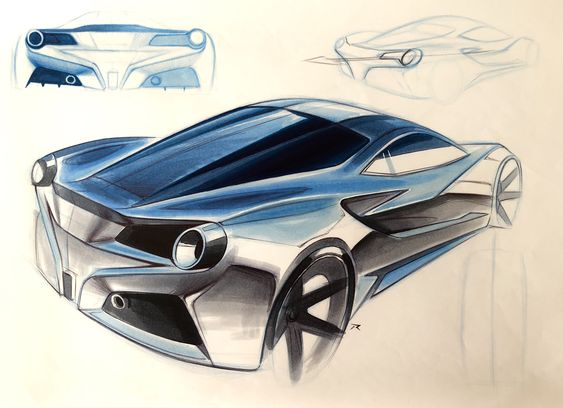
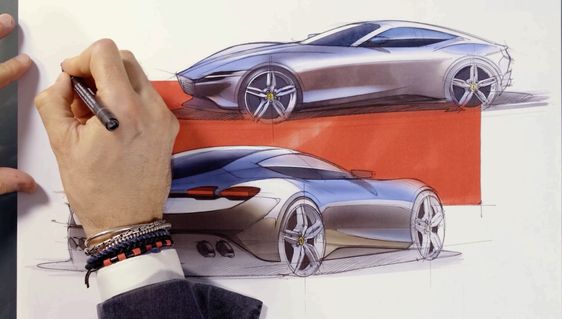
Developing a unique style in car drawing sets an artist apart. It allows for personal expression while showcasing their skills.
To cultivate a distinct art style, an artist should explore various techniques and influences. Trying different mediums and perspectives can help refine individual tastes and preferences.
Experimentation is essential. By sketching cars in diverse styles—from realistic to abstract—artists can discover what resonates with them.
Studying the work of other artists can provide inspiration. Analyzing different approaches can spark ideas that contribute to the development of a personal style.
Consistency also matters. Sticking to a specific approach over time results in a recognizable body of work. This builds an artist’s identity within the art community.
Attending workshops or engaging with peers can offer valuable feedback. Constructive criticism can help an artist understand how their style is perceived and encourage growth.
Ultimately, creating a unique style is an evolving process. It requires patience and openness to change while remaining true to oneself.
10) Capture motion in sketches

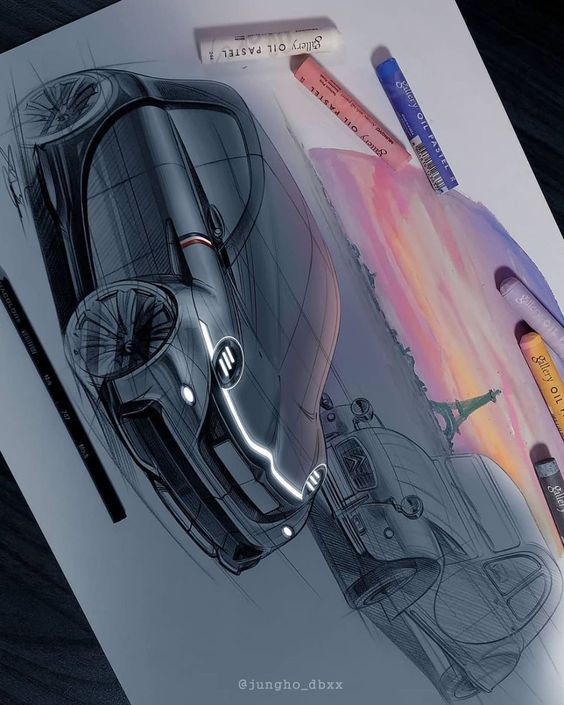
Capturing motion in car sketches adds dynamism and realism. To achieve this, an artist should focus on the position and angle of the vehicle. A slightly tilted perspective can suggest speed.
Using lines and curves can enhance the sense of movement. Diagonal lines can imply acceleration, while curved lines can convey flow. Such techniques make the drawing feel alive.
Another method is to include motion blur. This effect suggests rapid movement and can be achieved by lightly smudging certain areas of the drawing. It helps viewers understand the car’s speed and direction.
Employing different colors can also enhance the sense of motion. Bright, vibrant colors can indicate energy, while muted tones can suggest a slower pace.
Finally, consider the background. A blurred or simplified backdrop can further emphasize motion. It creates a focal point on the car while suggesting rapid movement.
Understanding Drawing Techniques
Mastering car drawing requires a solid foundation in essential techniques. Key aspects include establishing perspective and applying light and shadow effectively. These elements significantly enhance the realism and depth of any drawing.
The Importance of Perspective
Perspective is crucial in car drawing as it determines how three-dimensional objects appear on a two-dimensional surface. Artists utilize techniques like one-point, two-point, and three-point perspective to create depth.
- One-point perspective focuses on a single vanishing point on the horizon line. This technique suits simple compositions.
- Two-point perspective involves two vanishing points, providing a more dynamic view of the object. It’s common in vehicle drawings.
- Three-point perspective is more complex, adding height to the equation and dramatically altering the viewer’s viewpoint.
Practicing these methods enables artists to depict cars accurately and compellingly.
Using Light and Shadows Effectively
Light and shadow play a vital role in adding dimension to car drawings. Understanding the light source’s position helps artists determine where shadows and highlights should fall.
- Shadows create depth and focus. Artists can use hatching or cross-hatching techniques to depict different shadow intensities.
- Highlights indicate shiny surfaces. Skilled artists often leave parts of the paper blank or apply lighter colors to simulate reflectivity.
By mastering these elements, artists can enhance texture and form in their work, elevating their drawing from flat to lifelike.
Selecting the Right Materials
Using the appropriate materials can significantly enhance the process of drawing cars. Key choices include the type of pencils and the quality of paper, which together influence the final artwork.
Choosing the Best Pencils
Artists often choose pencils based on the desired effect in their drawings. Graphite pencils are favored for their versatility, available in various hardness levels ranging from 9B (soft) to 9H (hard). Softer pencils produce darker lines and are excellent for shading.
A recommended set might include:
- 2B to 4B: Ideal for sketching and shading.
- HB: Good for fine lines and details.
- 4H to 6H: Useful for lighter sketches and detailed work.
Mechanical pencils are also an option, providing consistent line widths, while colored pencils can add highlights and depth. Selecting the right pencil type can help convey specific characteristics of vehicles.
Paper Quality Considerations
The choice of paper affects the outcome of car drawings. Smooth paper works well for fine details and lower grading pencils, ensuring crisp lines. Conversely, textured paper allows for rich shading and depth, ideal for capturing the curves and shapes of cars.
When selecting paper, consider these options:
- Bristol Board: Heavyweight and smooth, perfect for precise lines.
- Watercolor Paper: Excellent for mixed media, providing texture for shading.
- Sketch Paper: Lightweight and ideal for practice but may not handle erasing well.
Choosing the right paper enhances overall performance and influences the artist’s technique and expression.
- 2.7Kshares
- Facebook0
- Pinterest2.7K
- Twitter0
- Reddit0

